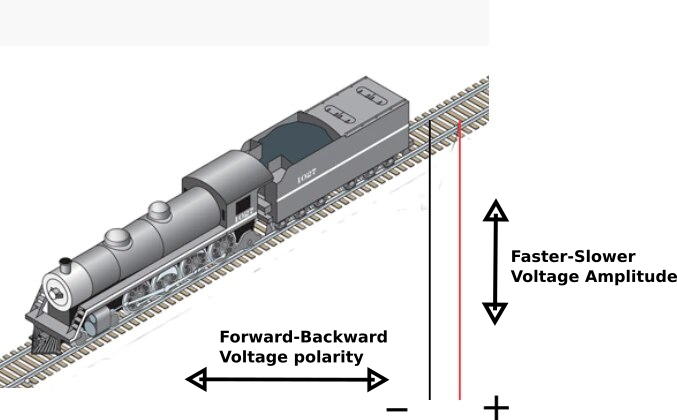Take advantage of pulse width modulation (PWM) to control the motor of a model train.
This entry for the Project 14 project theme World in Motion documents a project I am currently working on. My hobby is creating animation in model railroad layouts. My passion is writing. I plan to use PWM to control the speed of a train. Let’s couple the delivery of the project with a Project 14 challenge, creating a resource that someone might find of interest.

The speed and direction of a Direct Control (DC) HO scale model train locomotive is determined by the voltage level and polarity applied to the tracks. The tracks act as the conductor to the locomotive motor. Increasing the voltage, the locomotive goes faster, decreasing the voltage, and the locomotive goes slower. The polarity of the voltage applied to the track sends the locomotive forward or backward.
Pulse width modulation (PWM) is a modulation technique that generates variable-width pulses that can be used to control the amplitude of an analog signal. The average value of the analog signal fed to the load can be controlled by adjusting the pulse width of the signal being delivered to a controller. The controller output is on more of the time for a longer pulse width and off more of the time for a short pulse width.
Follow this design challenge to learn a little about PWM, examine the bill of materials for a practical design application and see the technique in action on an HO scale model train locomotive.

-

robogary
-
Cancel
-
Vote Up
0
Vote Down
-
-
Sign in to reply
-
More
-
Cancel
-

colporteur
in reply to robogary
-
Cancel
-
Vote Up
0
Vote Down
-
-
Sign in to reply
-
More
-
Cancel
Comment-

colporteur
in reply to robogary
-
Cancel
-
Vote Up
0
Vote Down
-
-
Sign in to reply
-
More
-
Cancel
Children